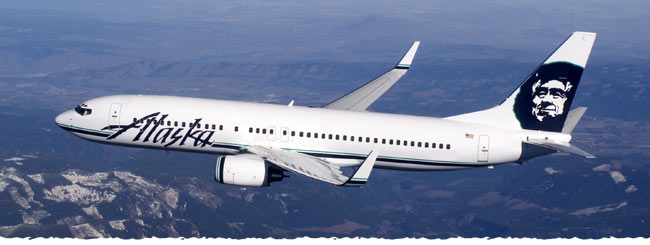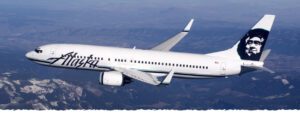Mid-Year Report from a New Alaska Airlines MVP Gold


For those that aren’t familiar with Alaska Airlines, it’s the 7th largest domestic airline and based out of Seattle, Washington. While the route map (as you can see below) is West Coast-centric all the way from Alaska to San Diego and even down into Mexico, Alaska does fly to some Midwest and East Coast destinations. They are also expanding and later this year will be opening new routes to New Orleans, Tampa, and Detroit from Seattle.
I was even able to status match my United Premier Gold status to Alaska’s MVP Gold level which provides extremely generous benefits for mid-tier status, including complimentary upgrades, fee waivers, and 4 guest upgrades. To re-qualify for MVP Gold, you need to fly 40,000 miles solely on Alaska or a combination of 50,000 miles on both Alaska Airlines and its partners. If you reach 75,000/90,000 EQM levels, you’ll hit MVP Gold 75K which is Alaska’s top tier status and comes with a bonus of 50,000 redeemable miles. Here is a full list of elite benefits.
– Aeromexico
– Air France
– American Airlines
– British Airways
– Cathay Pacific
– Delta
– Emirates
– Fiji Airways
– KLM
– Korean Air
– LAN
– Qantas
With all the changes happening at America, Delta, and United, and especially with the strength of its award chart which even allows stopovers on one-way bookings, Alaska Airlines is becoming a popular choice in the travel community. In my experience, in contrast to the big 3 which feel like a typical chain hotel experience, since Alaska is a smaller program it’s able to provide a more personalized experience, similar to what you’d get from a boutique property.
Now that we’re halfway through the year, I figured that it’d be a good chance to look back and reflect on the positives and negatives of my experiences with Alaska Airlines as a new MVP Gold. As you’ll see below, the +’s far outweigh the -‘s:
+ Use of Smaller Airports: While United uses some smaller airports, you’re usually stuck on a United Express plane and only have a couple departure times to choose from. Alaska uses smaller airports, which in the Bay Area include SJC and OAK, with flight schedules that are on par with larger airports such as SFO. I’ve really enjoyed having the option of using SJC instead of SFO which has helped me avoid delays and saves time on each trip just getting in/out of the airport.
+ Upgrades: I’ve only taken 6 Alaska flights this year, but I’m 100% on upgrades as an MVP Gold. So far, the upgrade process, including companion upgrades, has been pretty seamless. Also, since I’m primarily a leisure traveler, unlike business travelers I have the luxury of purchasing el cheapo fares well in advance of departure date. Most airlines prioritize upgrades by elite status, then fare class. Alaska prioritizes upgrades by elite status, then time of purchase which works out well for me.
+ Direct Phone Access to Friendly and Helpful Agents: I’ve called in several times, and each one has been answered directly after a couple rings without having to fumble through a phone tree. Also, each and every interaction I’ve had with Alaska’s phone agents has been pretty darn pleasant. I’ve had to deal with my share of phone agents at other airlines that left me downright mad and angry, so don’t underestimate the value in someone not ruining your day.
+ Mileage Accrual: One of the many reasons that it can be hard to switch frequent flyer programs is having to start from scratch in terms of earning miles. Since my typical mileage redemptions are for premium cabin international travel, it’s important for me to be in a program with diverse range of options to earn miles, other than just flying. We’re now in July and I’ve grown my balance to approximately 100,000 miles from the following:
- Flights – 30,000 miles which includes 100% RDM bonus as a MVP Gold
- Bank of America credit card – 40,000 miles sign-up bonus and 10,000 miles from spend [additionally, have used the annual companion pass which allows your to add a 2nd passenger for just $119 which helped to save over $500]
- Buying Miles – each time you book a ticket, you can also purchase up to 10,000 miles for roughly for about 2 cents each. I’ve done this twice for a total of 20,000 miles to help continue to build my account balance
+ Preferred Seating: As a United 1K I was able to bring up to 8 people into preferred seating as long as they were on the same reservation. However, phone agents would often be sticklers if your party was spread across multiple PNR’s, which can happen due to auto-splitting. Even with mid-tier status with Alaska, I was able to bring all 6 of my traveling party into preferred seating on a future trip, even though they were booked across 3 separate reservations. I had to make changes twice, and both agents were more than happy to help.
Overall, a much shorter list in terms of the negatives:
– Airline Partners: While the list of partners is big enough to get you where you need to go for the most part, there isn’t a lot of overlap that the bigger alliances have which can yield multiple options for many destinations.
– Upgrade Waitlist: When using guest upgrades, Alaska doesn’t provide the ability to waitlist for upgrades, and instead “U” space must be available which dilutes the value of the guest upgrades.
– Mileage Posting Times: A minor issue, but in general I’ve had to wait 5-7 days for my Alaska flights to post, and over a week for my Cathay Pacific partner flights to post to my account. United flights would typically post to my account in 1-2 days
Any other new Alaska Airlines members out there, and how have your experiences been so far?